On September 20-21, 2025, Earth will fly between Saturn and the sun, bringing Saturn opposite the sun in our sky … to what astronomers call “opposition.” In opposition, Saturn rises at sunset and is visible all night. Its rings are at their widest and brightest for the year. Saturn at opposition is a stunning sight through any small telescope. Join EarthSky’s Deborah Byrd as she explores Saturn’s rings, moons, and celestial path, and learn how to spot this night sky giant during the best viewing of 2025. Watch in the player above, or on YouTube.
Saturn at opposition
Date and time of opposition in 2025: 6 UTC (1 a.m. CDT) on September 21.
When and where to watch in 2025: Planets at opposition are always opposite the sun. They rise in the east at sunset and are visible all night. After its September 21 opposition, for the rest of 2025, Saturn will remain easily visible in the evening sky. It’ll finally disappear in the sunset glare in February 2026.
Brightness at opposition: Saturn is a bright planet. When it’s above our horizon, it’s easily visible to the unaided eye. It’s a bit brighter at opposition than usual – at its brightest for 2025 – at magnitude 0.6. In other words, at opposition (and always), Saturn shines as brightly as the brightest stars.
Distance from Earth at opposition: Outer planets are always closest to Earth for the year at opposition. At the 2025 opposition, Saturn is approximately 1.28 billion kilometers (795 million miles) away. That’s 71 light-minutes (about 8.55 astronomical units).
Constellation at opposition: Saturn will be in front of Pisces the Fish at opposition. It’ll move in front of Aquarius the Water Bearer by the end of September 2025.
Disk size at opposition: Saturn’s disk size is largest around opposition. That’s important to people looking through telescopes. At its largest, Saturn will appear through telescopes as 19.4 arcseconds across.
Ring tilt at opposition: We passed through the plane of Saturn’s rings in March 2025. That’s something we do every 13 to 15 years. The rings, which are exceedingly thin, can’t be seen in small amateur telescopes for a few weeks around the ring plane crossing. In September 2025, Saturn’s rings are still nearly edge-on from Earth. They’re tilted by only 2 degrees, relative to earthly viewers.
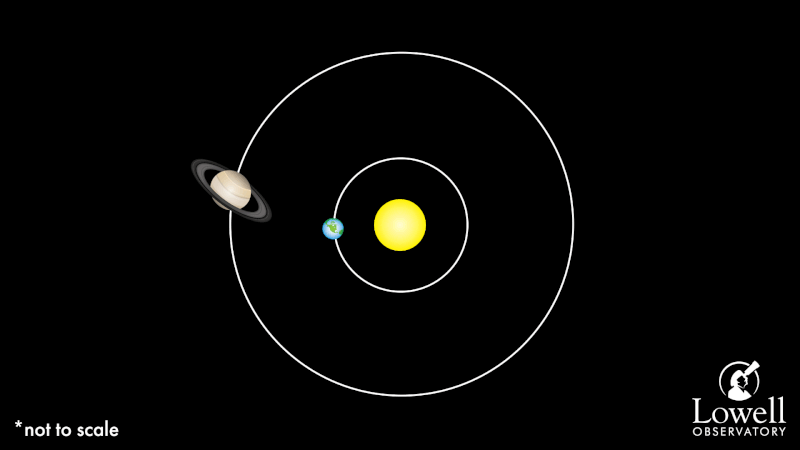
Around opposition is the best time to see Saturn
Opposition marks the middle of the best time of the year to see an outer planet. You can’t see Saturn’s rings through binoculars, but good binoculars, steadily held or mounted on a tripod, will reveal Saturn as a bright oval-shaped disk. Meanwhile, any small backyard telescope will show the rings.
Saturn’s rings: Top tips for seeing those glorious rings

For precise sun and Saturn rising times at your location:
Old Farmer’s Almanac (U.S. and Canada)
timeanddate.com (worldwide).
Stellarium-Web (online planetarium program)
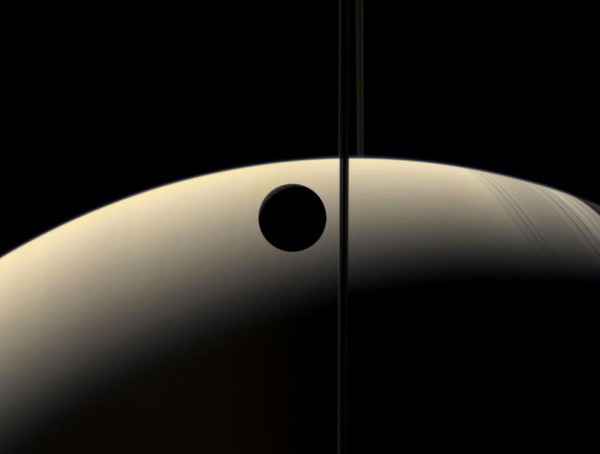

How often is Saturn at opposition?
In fact, Saturn comes to opposition nearly every earthly year. A year is the length of time Earth takes to travel once around the sun. But Saturn’s orbit around the sun takes 29.4 Earth years. So each year we have to travel slightly farther in orbit to catch up to, and pass, Saturn again. Thus Saturn oppositions are roughly 378 days apart and Saturn’s opposition comes about two weeks later each year.
Dates are based on UTC time.
2024 Saturn opposition: September 8
2025 Saturn opposition: September 21
2026 Saturn opposition: October 4
View from above the solar system, September 2025

Saturn is a world of rings and moons
Saturn is the 6th planet outward from the sun. People in ancient times saw it as a golden “star” that moved among the fixed stars: a wanderer. It wasn’t until astronomers began using telescopes in the 17th century that they saw its rings.
Astronomers used to speak of Saturn as having three rings. But spacecraft in the later part of the 20th century showed vastly more detail. In fact, they revealed that Saturn has thousands of thin, finely detailed rings made of tiny chunks of ice. Also, Saturn has at least 274 moons with confirmed orbits. And many of them don’t have names. Furthermore, only 13 of them have diameters larger than 30 miles (about 50 kilometers).
Certainly, Saturn is truly a wondrous world of rings and moons. Usually, it’s everyone’s favorite celestial object to gaze at through a small telescope. So if there’s a public astronomy night near you this month … go!
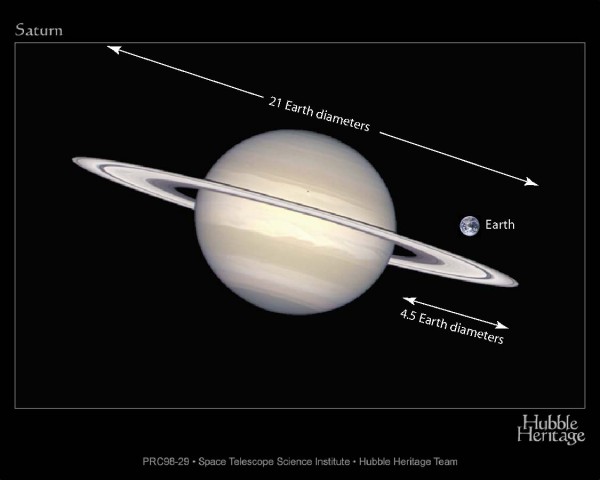
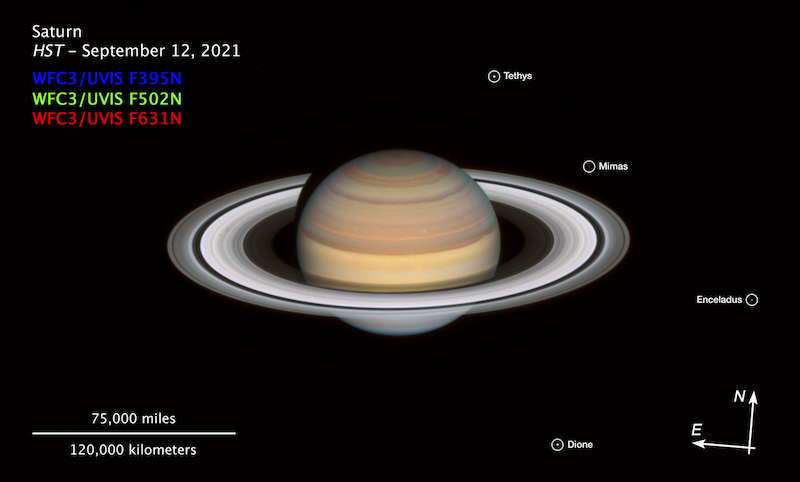
Read more: Titan casts a shadow on the planet Saturn
Saturn yearly changes
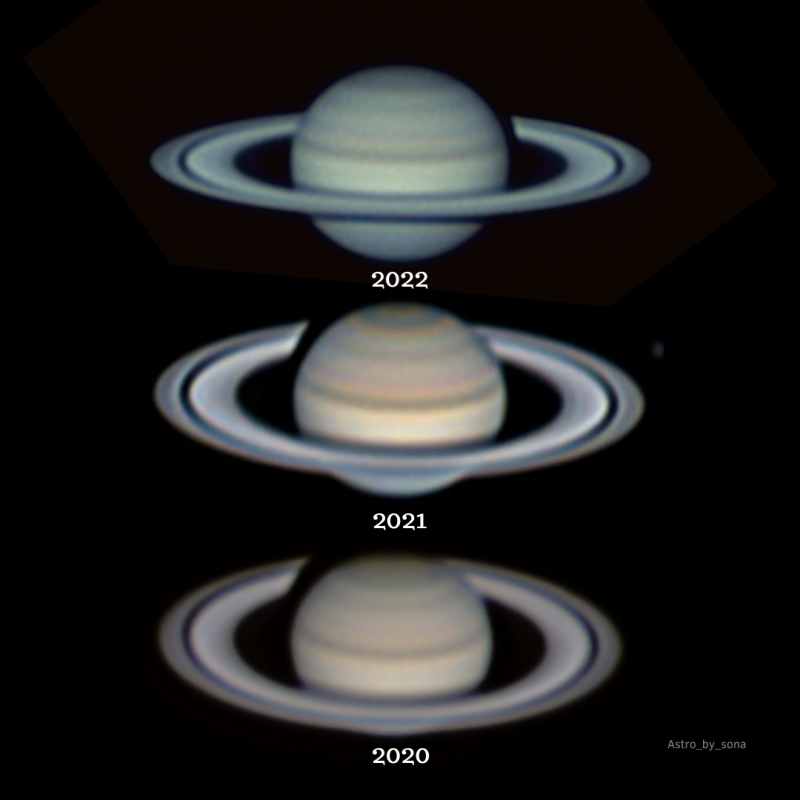

Bottom line: Saturn’s 2025 opposition comes on September 21, when Earth will sweep between the sun and Saturn, placing the ringed planet opposite the sun in our sky. Saturn will be in an excellent place to observe from late August through early October.
Read more: What does opposition mean for an outer planet?
Enjoying EarthSky so far? Sign up for our free daily newsletter today!











